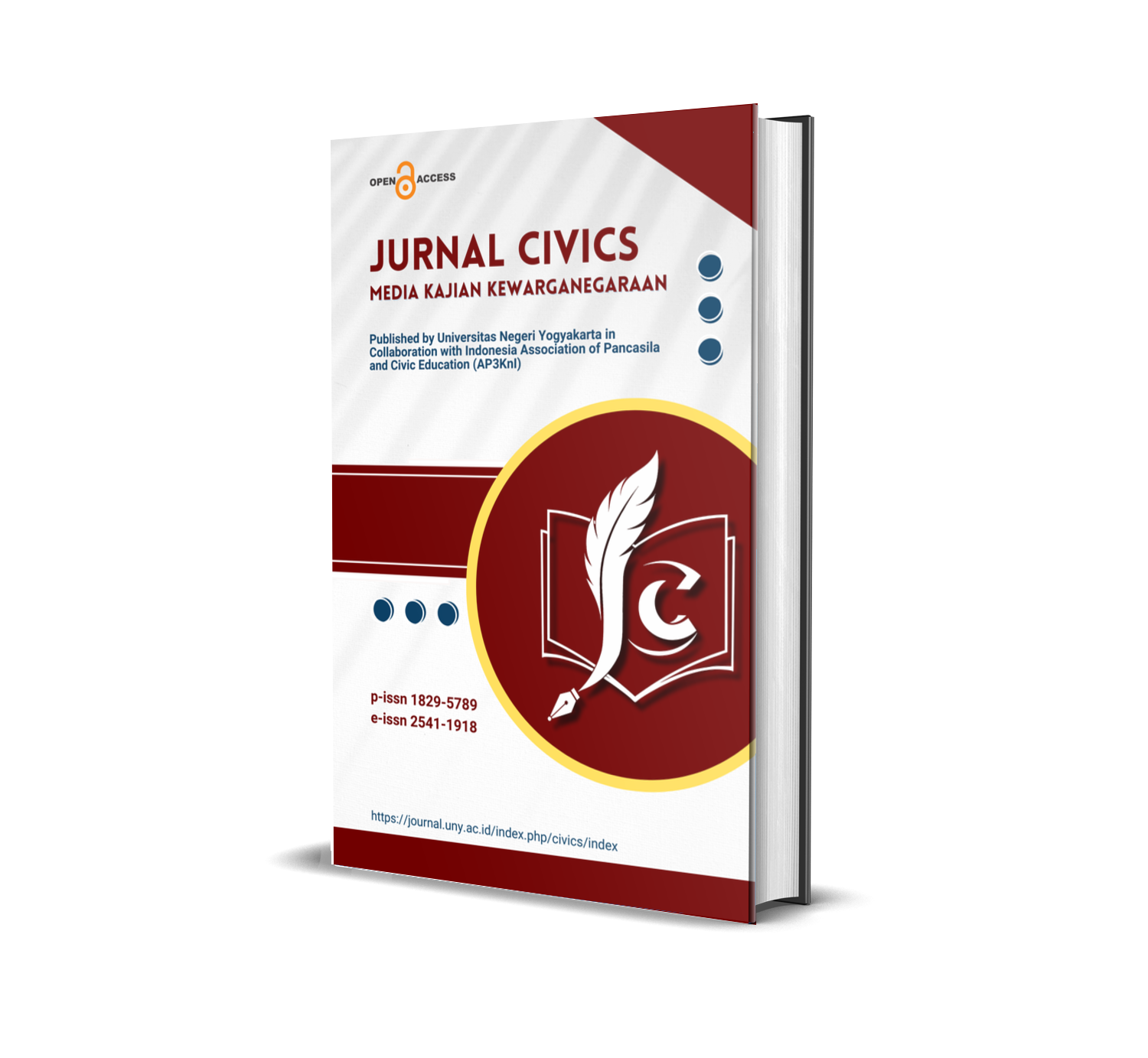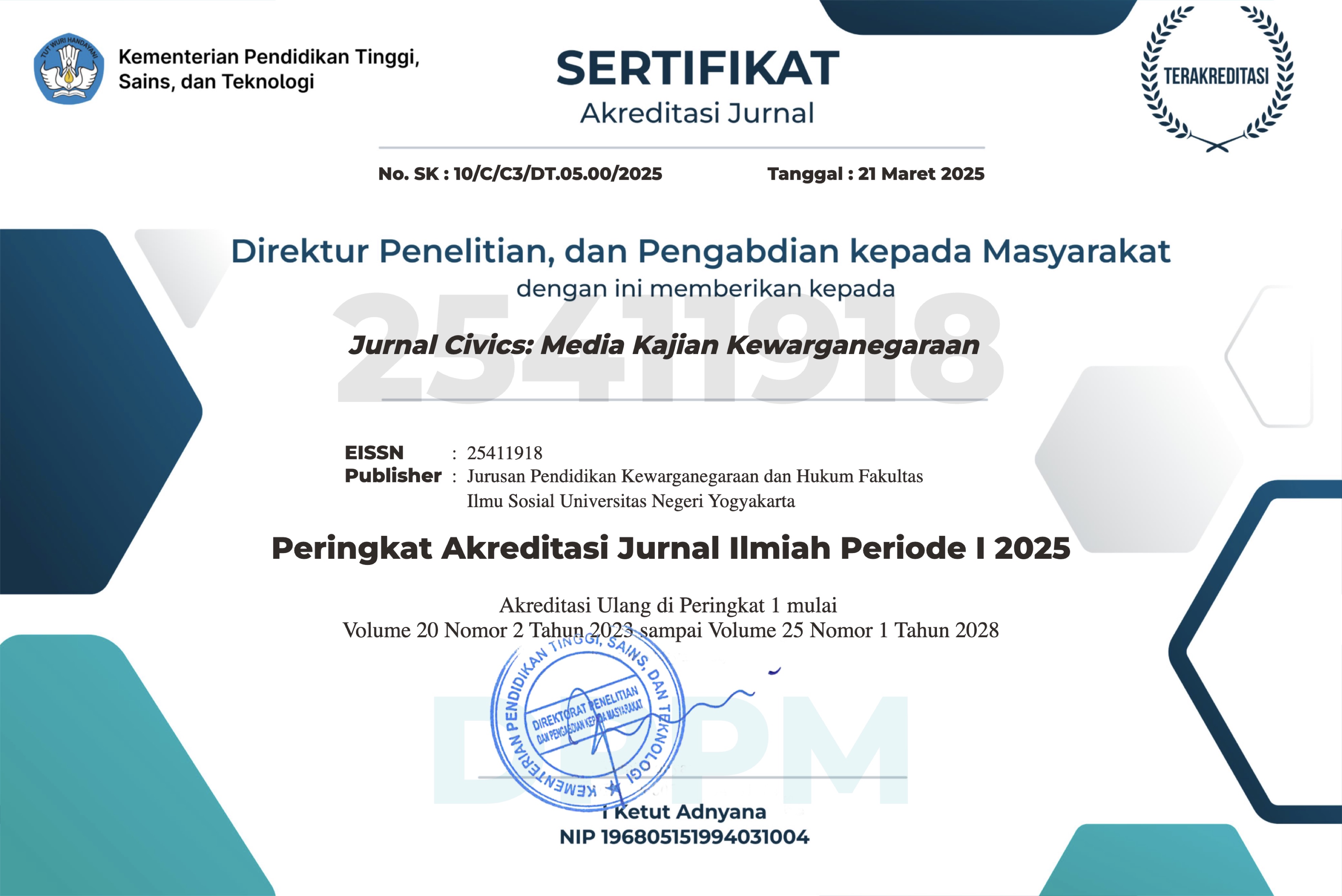Overview of traditional law in the use of Mayam as mahar in Aceh traditional marriage
DOI:
https://doi.org/10.21831/jc.v18i2.44945Keywords:
customary law, mayam, customary marriage, AcehAbstract
Customary law is the law that regulates individuals or groups that regulate social order and the behavior of life in an indigenous community. This study aims to find out the customary rules regarding the understanding of dowry contained in the Aceh Pidie community and to find out the causes and consequences of increasing the value of the dowry in the mayam count. The method in this study used a descriptive analytical qualitative research method. To answer these questions, the analysis technique used by the researcher is descriptive analysis and uses data collection techniques using observation, documentation, and interviews. The results of the study show that the dowry in Acehnese traditional marriages in Pidie Regency has a negative influence. A prominent factor is where men and women are hampered because of the high demand for dowry which must be adjusted to the changing times regarding the price of gold which is calculated in mayam units. The factors causing the increase in dowry in Acehnese traditional marriages in Pidie Regency are seen in terms of lineage, beauty, and the level of education of prospective women.
References
Abubakar, L. (2013). Revitalisasi hukum adat sebagai sumber hukum dalam membangun sistem hukum Indonesia. Jurnal Dinamika Hukum, 13(2), 319–331. http://dinamikahukum.fh.unsoed.ac.id/index.php/JDH/article/view/213
Arliman, L. (2018). Hukum adat di Indonesia dalam pandangan para ahli dan konsep pemberlakuannya di Indonesia. Jurnal Selat, 5(2), 177–190. https://doi.org/10.31629/selat.v5i2.320
Astuti, S. I., Arso, S. P., & Wigati, P. A. (2015). Analisis standar pelayanan minimal pada instalasi rawat jalan di RSUD Kota Semarang. Jurnal Kesehatan Masyarakat, 3(2), 103–111. https://ejournal3.undip.ac.id/index.php/jkm/article/view/11129
Creswell, J. W. (2014). Research design qualitative, quantitative, and mixed method approaches. SAGE Publication. Inc.
Creswell, J. W. (2018). Research design: Pendekatan kualitatif, kuantitatif, dan campuran (A. Fawaid & R. K. Pancasari (trans.); Cet. 3). Pustaka Pelajar.
Ghozali, A. R. (2014). Fiqh munakahat. Kencana.
Grossi, G., & Pepe, F. (2009). Consolidation in the public sector: A cross-country comparison. Public Money & Management, 29(4), 251–256. https://doi.org/10.1080/09540960903035031
Hadikusuma, H. (2003). Hukum perkawinan di Indonesia menurut pandangan hukum adat dan hukum agama. Mandar Maju.
Ismail, B. (2012). Romantika warna-warni adat perkawinan etnis-etnis Aceh. Majelis Adat Aceh.
Joireman, S. F. (2008). The mystery of capital formation in Sub-Saharan Africa: Women, property rights and customary law. World Development, 36(7), 1233–1246. https://www.sciencedirect.com/science/article/abs/pii/S0305750X08000521
Muliaz, R. (2019). Pelaksanaan perkawinan menurut hukum adat dayak ngaju ditinjau dari hukum Islam. Sagacious Jurnal Ilmiah Pendidikan Dan Sosial, 5(2), 89–92.
Olwig, K. R. (2005). The landscape of “customary” law versus that of “natural” law. Landscape Research, 30(3), 299–320. https://doi.org/10.1080/01426390500165385
Pratama, F. F., & Rahmat, R. (2018). Peran karang taruna dalam mewujudkan tanggung jawab sosial pemuda sebagai gerakan warga negara. Jurnal Civics: Media Kajian Kewarganegaraan, 15(2), 170–179. https://doi.org/10.21831/jc.v15i2.19182
Rafiqa, C. N., Nurmina, N., & Nurlaili. (2020). Analisis nilai sosial dalam adat perkawinan masyarakat Aceh di Kecamatan Jeunieb Kabupaten Bireuen. Aliterasi: Jurnal Pendidikan Bahasa Dan Sastra Indonesia, 1(1), 31–39. http://103.215.72.91/index.php/alt/article/view/154
Rosenbaum-Feldbrügge, M., & Debiasi, E. (2019). The impact of parental death on the timing of first marriage. Demographic Research, 40, 799–834.
Santoso, S. (2016). Hakekat perkawinan menurut Undang-Undang Perkawinan, Hukum Islam dan Hukum Adat. YUDISIA: Jurnal Pemikiran Hukum Dan Hukum Islam, 7(2), 412–434. https://journal.iainkudus.ac.id/index.php/Yudisia/article/view/2162
Sembiring, E., & Christina, V. (2014). Kedudukan hukum perkawinan adat di dalam sistem hukum perkawinan nasional Menurut UU No. 1 Tahun 1974. Journal of Law, Society, and Islamic Civilization, 2(2), 72–94. https://jurnal.uns.ac.id/JoLSIC/article/view/50254
Setiady, T. (2015). Intisari hukum adat Indonesia dalam kajian kepustakaan.
Sugiyono. (2009). Memahami penelitian kualitatif. Alfabeta.
Sugiyono. (2017). Metode penelitian kualitatif. Alfabeta.
Webber, J. (2010). The grammar of customary law. McGill Law Journal, 54(4), 579–626. https://doi.org/10.7202/039646ar
Downloads
Published
How to Cite
Issue
Section
Citation Check
License
The authors agree to transfer the transfer copyright of the article to The Jurnal Civics: Media Kajian Kewarganegaraan effective if and when the paper is accepted for publication.
Authors and other parties are bound to the Creative Commons Attribution-NonCommercial-ShareAlike 4.0 International License for the published articles, legal formal aspect of journal publication accessibility refers to Creative Commons Attribution-NonCommercial-ShareAlike 4.0 International License (CC BY-NC-SA).










